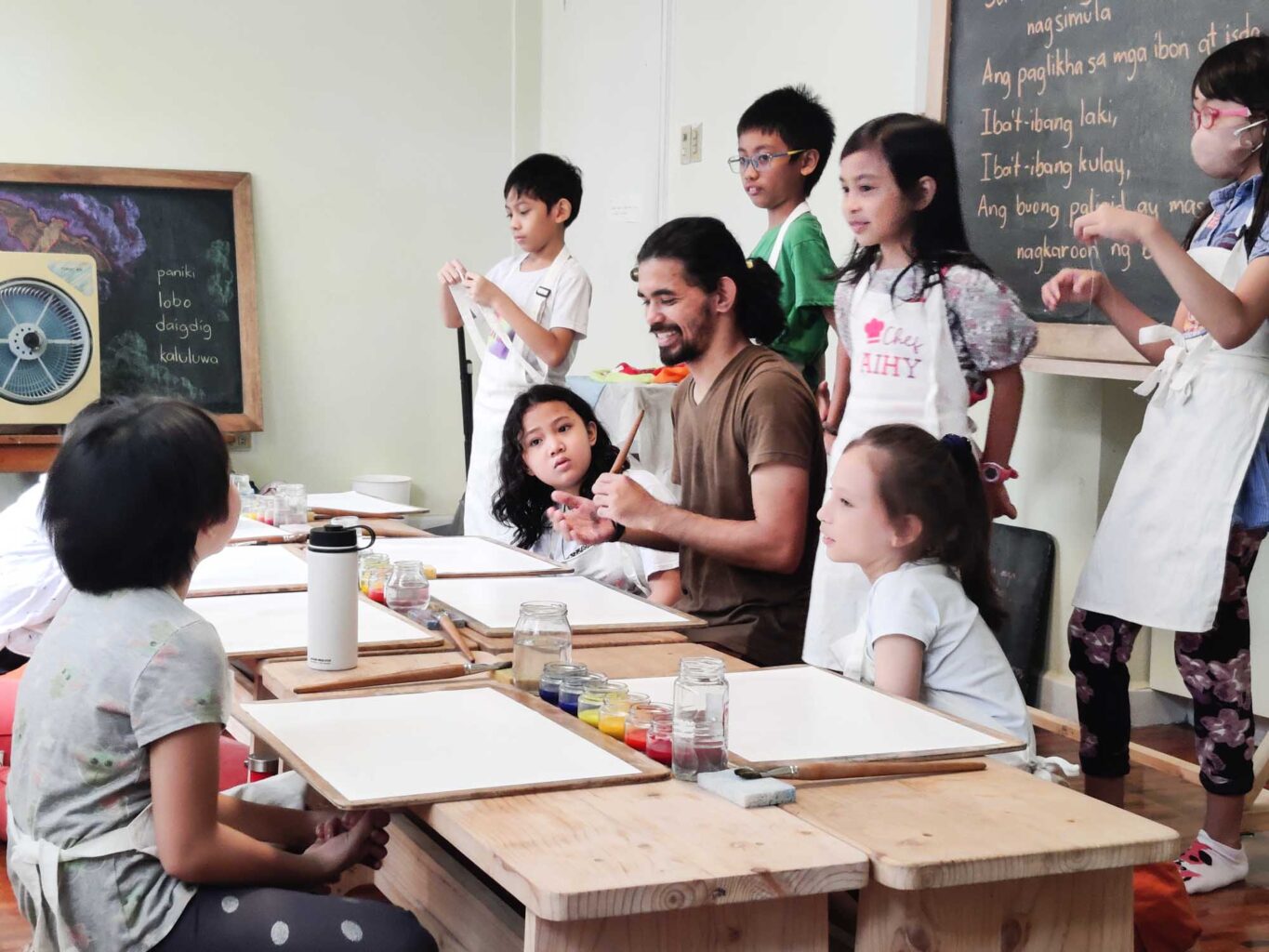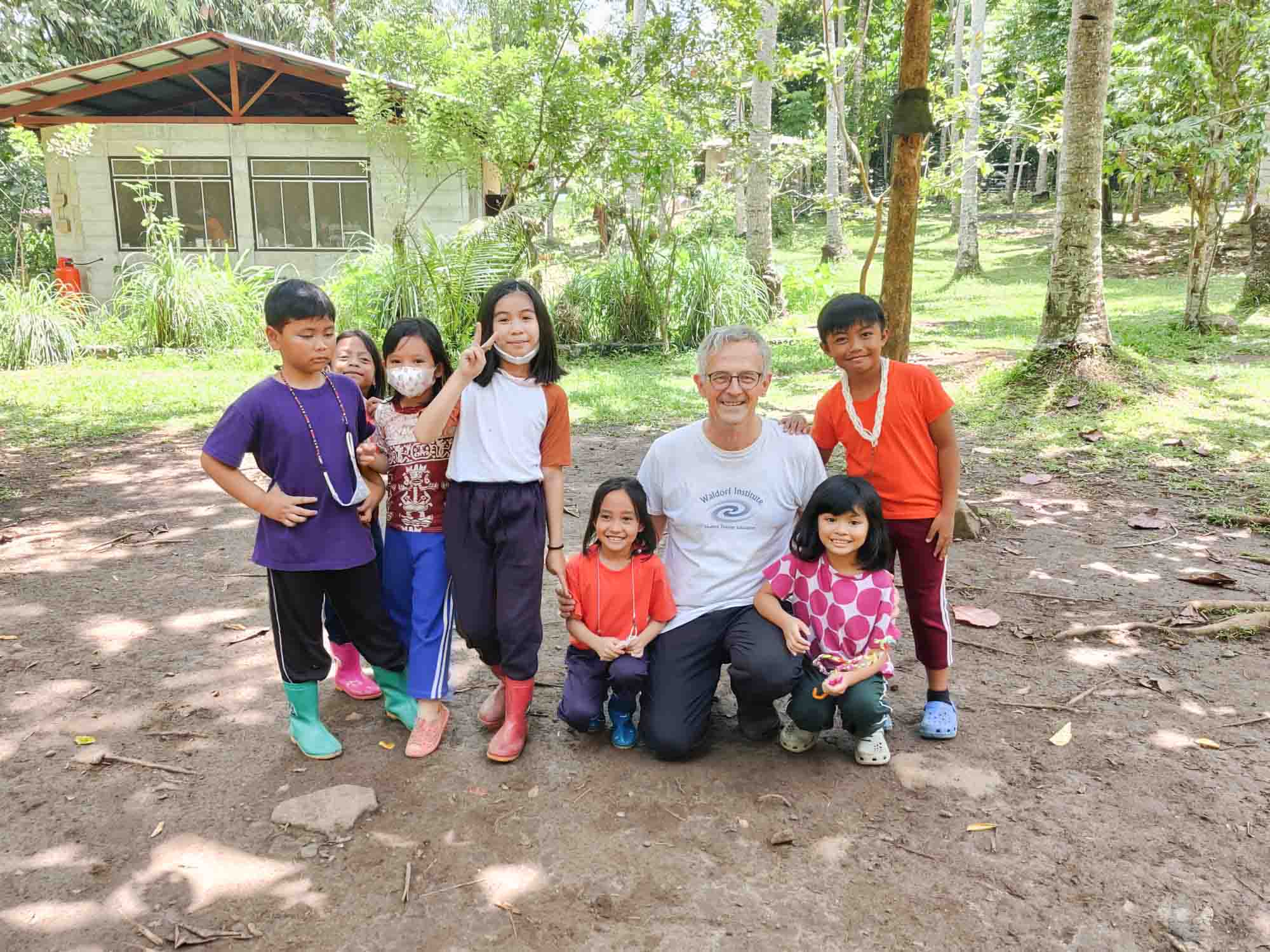Should curricula in other countries be based on a European ideal? Does that even exist? And what can European Waldorf schools learn from other cultures? Sven Saar, who is internationally active in teacher education, offers suggestions.
Does it make sense for children in Indonesia to knit socks (which no one would wear in that country) with wool imported from Europe, just because that is «on the curriculum» for fifth graders?
Should the Oberufer Christmas plays be performed in Japanese Waldorf schools?
How do mentors respond when Thai colleagues ask, «Besides Norse Mythology, what stories can I tell in fourth grade?» This is about more than finding the right answer: the fact that the question is even asked reveals a status problem which is worth investigating.
In the first phase of the worldwide spread of Waldorf Education, experienced and wise colleagues carried their proven practice with a lot of persuasive power to countries where they met open ears, hearts and a hands-on pioneering spirit among parents and initiators. Waldorf schools grew rapidly in capital cities, with an enthusiastic clientele of native educated middle-class and emigrant Europeans who found here familiar values and an internationally tested, child-centered curriculum. Today, many of these schools successfully lead young people to university entry, perform impressive artistic work, and are financially and socially stable and established. And yet one often comes across questions like the ones cited above, which indicate that people working here can experience themselves as part of an imported culture, having more or less accepted that what lives locally as wisdom and tradition is somehow inferior to the European Waldorf style.

This is aggravated by the problem that even after decades, most of these countries are unable to finance thorough teacher education due to a lack of state support. This is why – and this is happening more and more often in Europe as well – teachers find themselves in positions of responsibility in schools right after their first acquaintance with the Waldorf world, and are more interested in classroom strategies than in the foundations. In order to create a stable daily routine, one needs maps and signposts. A list of traditions, even one that appears foreign and old-fashioned as it, comes in very handy.
The Waldorf Decolonization Impulse deals with the question of what is authentically Waldorf: even in 19th century phase of political and cultural colonialism, not all Europeans were high-handed exploiters: some of them went to non-European countries with a sincere ethical sense of mission (at least from their point of view) and yet created and left behind much suffering, because they failed to listen to the locals. It is high time to come to terms with this damage and also to ask questions of ourselves: despite our high regard for all the admirable pioneering achievements – which aspects would and do we have to approach differently today?
I work as a mentor, conducting almost daily seminars and courses with people in Asia and Africa who want to give fresh, authentic impulses to their communities. Often their ideals are social ones: they have encountered Waldorf education in expensive middle-class schools and now want to make it accessible to children whose parents cannot afford prohibitive school fees. Some want to establish Waldorf schools in rural areas, in the local language and dialect, and have to explain their impulses without using English or French. Usually a few friends find each other, rent some rooms and off they go – this is reminiscent of the first English Waldorf school, which started in London in 1925 with seven children and five teachers. There is often no time or money for training – should that mean the impulse of a people-oriented reform education will have to wait? These pioneers are often very serious about Waldorf education, seeking to understand it from the inside, and not just adopt traditional values and practices. They are developing curricula and processes that fit their culture and the 21st century, rather than taking the roundabout route still followed in many places in Europe: «What did Caroline von Heydebrand have to say about this? What did Steiner suggest? What did our mentor bring thirty years ago from Stuttgart?»
It is certainly helpful to be informed by established good practice – but that is not automatically suitable for orientation, especially if one is moving in a completely different context of time and space.

Instead, the new pioneers go directly to the sources: They ask not only what Steiner said, but what he meant, and how that might be translated into local contexts. For example, it makes sense all over the world for ten-year-old children to learn about house building and farming practices, because the acquisition of these skills gives them stability in a necessary developmental crisis. This does, however, not have to be clothed in Hebrew mythology or involve imagery connected to the Middle Ages, as is customary in Europe, and it certainly should not assume the four seasons of the northern hemisphere. At the equator, agriculture follows quite different rhythms, and local curricula must be designed accordingly.
Incidentally, considering decolonization also makes sense in a European context: Is it really still appropriate to talk about ‹Voyages of Discovery› in seventh grade? It does not detract from the undoubted courage of Columbus if his journeys are also viewed from the perspective of local people: America, Africa, Asia or Australia did not have to be ‹discovered›. People already lived there, and they had it no worse than Europeans. Every misguided, adventurous, charismatic Columbus was followed by an unscrupulous Pizarro, bent only on submission and exploitation. The Indian subcontinent, for example, had the highest GDP on earth in the 16th century, before the Portuguese went on their ‹voyages of discovery› and put an end to prosperity. From the European point of view, highly developed cultures increasingly became passive trading partners or, even worse, suppliers of slaves, and that long overdue narrative needs to find its way into our classrooms.

We are also on the way to finally overcoming well-intentioned yet fatal clichés: ‹African culture› does not exist, nor do ‹African› music, language or politics. There are over 1500 languages on the continent, 250 of them in Nigeria alone. Simplifications and superficialities (sentences like «African houses are built of mud and straw» can still be found in many a third-grade book) are the result of a Eurocentric culture clinging on to the belief that it has discovered Africa and wrongly regarding and presenting itself as superior.
The idea often conveyed in fifth grade that human civilization developed westward from India has always been too linear to be even remotely true, and yet it is still taught, often supported by decades-old Waldorf resource books (for instance the ‹Kovacz› books) that seek to preserve the Eurocentric myth that the Ancient Greeks were the crown of civilization and that we Central Europeans are their successors. If one tells fifth graders that the ancient Indians lived as mystical-spiritual children of nature, that the Persians discovered agriculture and the Mesopotamians architecture, one ignores for example the Indus Valley Civilization, not to mention Chinese achievements in urban development and agriculture. China does not appear at all in the traditional Waldorf history of the lower and middle school: apparently there is no room for it between India and Greece. Göbekli Tepe, in what is now southern Turkey, existed millennia before the brick buildings of the Babylonians, but it undermines the myth of the East – West narrative, and so does not appear in most Waldorf curricula until tenth grade. Such stereotypical narratives, reinforcing outdated power structures, are not only inappropriate for children in Japan, Peru, or Tanzania: they are also – perhaps even more so – inappropriate for children in Europe.
Should we therefore abolish the recognisable world-wide curriculum, throw the baby out with the bathwater? Some activists in the USA demand that Columbus not be mentioned at all, because he made the slave trade possible in the first place. The Waldorf world rightly prides itself on existing in a contemporary, flexible and sensitive cultural landscape. Here the question is not of prohibitions or permissions, nor of being right or condemning ‹wrong thinking›. Instead, we converse with each other and learn how we can develop in such a way that no one has to feel excluded or patronized by our curricula. New, non-European Waldorf initiatives are making an outstanding contribution here, precisely because they have either never seen the old ways or bravely ignore them as irrelevant. A good resource to follow up is the initiative by Alanus University to bring together leading thinkers on the subject from around the world in regular online lectures. These can be followed live and for free, and accessed as recordings on the website International Campus Waldorf.

My colleague at the Waldorf MTE, Alan Swindell, shows our British students in a simple and impressive way that they will be ‹curriculum creators›: when they are asked to demonstrate for the first time in an assignment their ability to plan a whole subject block according to rhythmic and salutogenetic principles, he sets the condition that this block must not yet exist! Students must invent it, assign it to a subject area and age group, and justify why it is important and meaningful to the children in their care. They experience through their own creative actions that being a Waldorf teacher is not about maintaining the status quo, but bringing something new and relevant into the world out of personal and professional initiative. Afterwards, when they get to know the established subjects and main lesson blocks in more detail, they bring a critical alertness to this encounter.
German, French or Polish second graders benefit from biographical stories about heroic individuals from all over the world, not only from the Catholic tradition of saints. In third grade, children in Arab and Asian countries also learn about the Hebrew Old Testament as a treasure of anthropological world literature in which the developmental path from hunter-gatherer to settled life is shown in an imaginative way. Fifth graders learn botany through observing plants that grow in their area, and the laws of leverage explored in seventh grade are the same all over the earth. There really is no need to tell sixth graders in Beijing about Crusader knights, because chivalry and courtly values were at least as well established in Chinese tradition as in the European Middle Ages. The challenge in our fast-moving, connective and diverse world is to develop a local consciousness without thinking parochially, and to feel globally without losing one’s moral-ethical compass.
With the help of their education, children should be able to put down roots, feel a sense of belonging and develop self-confidence, so that they can imagine and inhabit a world without internal or external boundaries. The center of Waldorf Education is not in Europe, nor on another continent: it is in the periphery, living and developing daily in all 40,000 Waldorf teachers around the globe.
All photos Sven Saar






Interesting article! thank you. Im a Waldorf kindergarten teacher from Chile, so there are many things that I can relate with, also, I went to a waldorf school from 4 to 8th grade. But I feel mostly after reading concern and sad. I hope that what the article doesn’t mention, Why those things are in the curriculum, the source of the reason (it is asked as question but there is no answer)…There are spiritual reasons, so how do we meet those whatever shape or form we come up with?…also, as a kindergarten teacher Im deeply worried when I read:” so that they can imagine and inhabit a world without internal or external boundaries.” That for me is what is the distortion of mass media and neoliberalism. There are internal and external boundaries, always, and that is not wrong, how do we overcome them, that is why here, incarnated human beings.
Thank you for this interesting read. I feel that this is a challenging task. I am wondering why would Columbus be omitted from history lessons when his biography is one big lesson to learn about. We can see from him how lack of persistence and all sorts of impulsiveness can lead to so many situations that have effects even after when one has left the earth. Whatever humanity tends to forget, humanity tends to repeat.
I have one discussion in history class when the students debated as the natives and the conquistadors, and I should say that omission of key figures in history should never be an option when teaching.
The Goetheanum offers no space for racism.
Good reading Sven, best wishes, Adrian Lamont
Yes!! Thank you for your article. I am enjoying the freedom of seeing the curriculum anew from the eyes of my students. I teach a group of students almost all of non European descent. I taught them Mayan Mythology this year and look forward to bringing them ancient civilizations beginning with the Mayans and Aztecs.